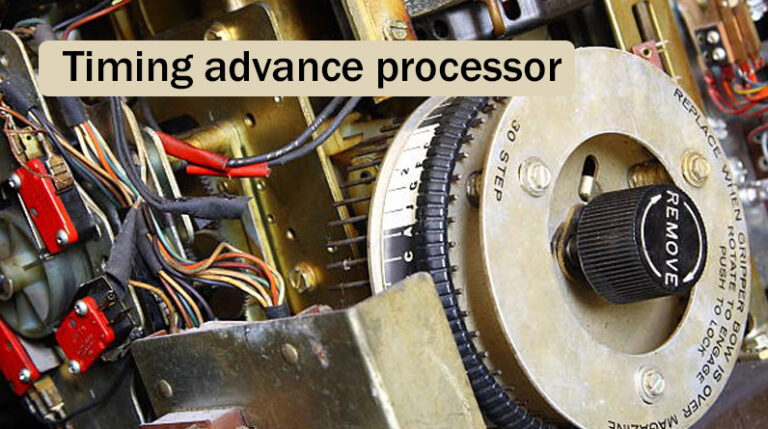When you switch a vehicle from conventional gasoline to alternative fuels like Liquefied Petroleum Gas (LPG) or Compressed Natural Gas (CNG), something critical changes inside the engine—not the fuel itself, but how it burns. This is where the timing advance processor (TAP) becomes essential. While many drivers remain unaware of this technology, it represents the bridge between modern engine management systems and the reality of alternative fuel combustion dynamics.
The timing advance processor is far more than a simple aftermarket add-on. It’s a sophisticated microprocessor device that intercepts and modifies ignition timing signals in real-time, compensating for the fundamentally different combustion characteristics of alternative fuels. Understanding this technology is crucial for anyone considering LPG or CNG conversion, as it directly impacts engine performance, fuel economy, emissions, and safety.
Understanding the Core Problem: Why Traditional ECUs Fail with Alternative Fuels
Modern vehicles are equipped with sophisticated Engine Control Units (ECUs) precisely calibrated for gasoline combustion. These systems represent years of manufacturer optimization, involving complex algorithms that monitor hundreds of engine parameters simultaneously. However, this precision becomes a liability when alternative fuels enter the picture.
The fundamental issue stems from a simple physics principle: alternative gases burn slower than gasoline. Methane (the primary component of CNG) and propane/butane (in LPG) have significantly higher octane ratings—often exceeding 130 RON compared to gasoline’s 95-98 RON. This higher octane rating should theoretically allow more aggressive ignition timing, but the ECU remains programmed for gasoline parameters.
The Combustion Speed Mismatch
When an engine runs on gasoline, combustion occurs rapidly, requiring precise timing calibrated through years of manufacturer testing. Switch to CNG or LPG without adjustment, and the fuel’s slower flame propagation means combustion hasn’t fully developed by the time the piston reaches its optimal power-generating position. The result: reduced power output, poor fuel economy, and potential engine knocking.
Additionally, modern engines with variable valve timing (VVT) systems present another challenge. These engines use separate sensors for crankshaft and camshaft positions, creating an interdependent sensor network. Simple signal modification at the sensor level triggers self-diagnostic failures and warning lights—or worse, forces the engine into limp mode.
What Is a Timing Advance Processor? The Technical Definition
A timing advance processor is an electronic control unit that intercepts ignition timing signals and advances them by 5-20 degrees (relative to crankshaft position) to optimize combustion for alternative fuels. Unlike traditional ignition timing modifications that alter sensor signals, modern TAPs operate at the output stage—intercepting signals sent to ignition coils rather than modifying sensor inputs.
This architectural difference is critical. By processing the signal at the ignition coil stage, TAPs maintain the integrity of the ECU’s self-diagnostic systems and variable valve timing coordination, allowing the engine to function optimally without triggering error codes or system conflicts.
How Timing Advance Processors Actually Work
The internal operation of a TAP involves sophisticated real-time signal processing. The device must analyze the ignition signal from the ECU, identify the precise moment of ignition, and calculate the necessary delay to achieve the desired advance. Here’s the process breakdown:
- Signal Reception: The TAP intercepts the high-voltage ignition signal destined for the coil(s)
- Coil Emulation: The processor includes an emulator circuit with an auxiliary coil and resistor that mimics the ignition coil’s behavior, preventing the ECU’s self-diagnostics from detecting an absent load
- Signal Filtering: Noisy signals are processed through sophisticated filtering algorithms to identify the true ignition moment (marked by the largest signal spike)
- Timing Calculation: The processor measures charge and discharge time periods, applies mathematical formulas to predict cycle duration, and calculates the necessary delay
- Signal Modification: The filtered signal is delayed by the calculated amount (converted to a delay in the opposite direction relative to crankshaft rotation)
- Output Generation: The modified signal is sent to the ignition coil with advanced timing
For a four-cylinder engine running at 6,000 RPM, each crankshaft degree represents approximately 27 microseconds. This timeframe illustrates why TAP programming requires assembly-level code—standard programming languages cannot guarantee the consistent execution timing necessary for microsecond-level accuracy.
Types of Timing Advance Processors: Matching Technology to Your Engine
Not all timing advance processors are created equal. Different ignition system architectures require different TAP technologies. Understanding which type your vehicle needs is essential for proper installation and performance optimization.
Mechanical Breaker Point Systems
Older vehicles equipped with traditional mechanical ignition systems (breaker points and distributors) represent a simpler installation case. The AEB531 TAP is specifically designed for these systems, connecting between the distributor’s negative terminal and the ignition coil’s negative terminal. While less common today, these systems still exist in classic car conversions and older fleet vehicles.
Electronic Ignition with Distributor
Vehicles from the 1980s through 2000s typically featured electronic ignition modules paired with distributors. Models like the AEB526N and AEB549N TAPs interface with these electronic modules, offering improved response times compared to mechanical systems. These processors operate with timing advance ranges of 0-20 degrees and include emergency bypass connectors for safety.
Electronic Systems with Ignition Modules
More sophisticated vehicles employ dedicated ignition modules that manage timing based on engine speed and load data. The AEB515N represents this category—a reprogrammable TAP capable of adjusting timing curves for specific engine types and fuel combinations. This flexibility makes it suitable for diverse vehicle applications within its compatibility range.
Crankshaft Position (CKP) Sensor Systems
Modern engines rely on CKP sensors that provide precise timing information to the ECU. These systems use either inductive sensors (generating analog voltage) or Hall effect sensors (producing digital square waves). Models like the AEB510N, AEB516N, AEB511N, and AEB518N are designed specifically for CKP systems, with timing advance ranges reaching 0-30 degrees for enhanced performance optimization.
| TAP Model | Ignition System Type | Sensor Compatibility | Timing Range | Fuel Types |
|---|---|---|---|---|
| AEB531 | Mechanical Breaker Points | N/A | 0-25° | CNG, LPG |
| AEB526N | Electronic with Distributor | N/A | 0-20° | CNG, LPG |
| AEB515N | Electronic with Module | N/A | Programmable | CNG, LPG |
| AEB510N/AEB516N | CKP Sensor (Inductive) | Inductive | 0-30° | CNG, LPG |
| AEB511N/AEB518N | CKP Sensor (Hall Effect) | Hall Effect | 0-30° | CNG, LPG |
The Critical Difference: Fuel-Specific Optimization
While both CNG and LPG require timing advance when compared to gasoline, their combustion characteristics differ subtly—differences that sophisticated TAPs accommodate.
CNG Advantages and Considerations
Compressed Natural Gas offers several combustion advantages: an octane rating around 130, slower flame propagation, and inherently cleaner combustion with reduced knock tendency. These characteristics allow more aggressive timing advances, often pushing toward the upper limits of 20-30 degrees. The cleaner combustion also means lower emissions and reduced carbon buildup in the engine.
LPG Characteristics and Optimization
Liquefied Petroleum Gas exhibits combustion properties more similar to high-grade gasoline, with octane ratings typically between 100-105. However, LPG’s vaporization properties and storage pressure considerations create different timing requirements. The optimization approach differs from CNG, often utilizing slightly more conservative advances in the 15-20 degree range.
Installation Considerations: From Mechanical Connections to Real-Time Calibration
Installing a timing advance processor extends beyond simple wiring. The process demands careful system analysis and precision calibration.
Pre-Installation System Analysis
Before physical installation, technicians must accurately identify the vehicle’s ignition system type. A misidentified system leads to incompatible TAP selection, installation failures, or worse—damage to the vehicle’s electrical system. This diagnosis requires understanding signal characteristics, testing with oscilloscopes, and consulting compatibility databases.
Physical Installation Steps
- Disconnect the battery: Essential safety precaution preventing electrical damage
- Identify connection points: Locate appropriate signal wires based on ignition system type and manufacturer specifications
- Install the TAP: Mount in a protected location away from heat and moisture, ensuring proper grounding
- Establish connections: Follow wiring diagrams precisely, maintaining signal polarity and shielding integrity
- Configure settings: Adjust timing advance using onboard potentiometers, DIP switches, or diagnostic software
- System verification: Test operation using timing lights and diagnostic equipment across full RPM range
Emergency Bypass Functionality: Safety Through Redundancy

All modern timing advance processors include emergency connector functionality—a critical safety feature allowing immediate TAP bypass if malfunction occurs. When activated, this connector directly links the original ignition components, restoring factory timing and allowing continued vehicle operation. This redundancy ensures that TAP failures never strand vehicles, a vital consideration for commercial fleets and daily-use vehicles.
Real-World Performance Impact: Data-Driven Results
The practical benefits of proper TAP installation manifest in measurable improvements:
- Power Enhancement: Optimized combustion timing can increase engine power output by 5-15% when operating on alternative fuels
- Fuel Economy Improvement: Better combustion efficiency translates to 10-20% improved fuel economy compared to non-optimized systems
- Emissions Reduction: Cleaner combustion significantly reduces carbon monoxide and particulate emissions
- Backfire Elimination: Proper timing eliminates dangerous backfiring, a critical safety benefit in populated areas
- Engine Longevity: Optimized combustion reduces excessive wear and carbon buildup, extending engine life
Troubleshooting Common Issues: Diagnostic Approaches
When problems arise after TAP installation, systematic diagnosis determines the root cause:
| Symptom | Likely Cause | Solution |
|---|---|---|
| Engine knock on CNG/LPG | Insufficient timing advance | Gradually increase advance setting in 2-3° increments |
| Poor acceleration | Excessive timing advance | Reduce advance settings, find optimal point through testing |
| Engine won’t start | Wiring connection error | Verify all connections match wiring diagram exactly |
| Rough idle quality | Incorrect idle bypass setting | Adjust idle-specific timing parameters |
| TAP unresponsive | Power supply issue | Verify 12V power supply and ground connections |
Choosing the Right Timing Advance Processor for Your Vehicle
Proper TAP selection requires systematic evaluation of multiple factors working in concert:
Critical Selection Criteria
Ignition System Identification: Accurately determining your vehicle’s ignition system type is the foundation of selection. Confusion between mechanical, electronic with distributor, electronic with module, or CKP sensor systems leads to incompatible purchases and installation failures.
Fuel Type Commitment: Clarify whether you’ll run exclusively on alternative fuel or operate as dual-fuel. Some TAPs optimize for single fuels while others balance performance across fuel types.
Performance Objectives: Define your goals—maximum power output, fuel economy optimization, emissions reduction, or balanced performance. Different TAP configurations achieve different objectives.
Manufacturer Reliability: Select established manufacturers like AEB or STAG that offer comprehensive technical support, proven track records, and readily available spare parts.
Conclusion: The Future of Alternative Fuel Efficiency
The timing advance processor represents far more than an accessory—it’s an essential bridge technology enabling reliable, efficient operation of alternative fuel engines in the modern automotive landscape. As environmental concerns drive alternative fuel adoption and fuel costs continue rising, TAPs will become increasingly important for fleets and individual vehicle owners seeking operational efficiency without sacrificing performance or reliability.
Whether you operate a commercial fleet converting to CNG, a delivery vehicle utilizing LPG, or a personal vehicle exploring alternative fuel options, understanding TAP technology empowers informed decisions that directly impact your vehicle’s performance, economy, and longevity. The investment in quality timing advance processor technology repays itself through improved efficiency, reduced operational costs, and the satisfaction of operating a cleaner, more efficient vehicle.
Looking for well-researched content and timely updates? Keep visiting VIPLeague.

